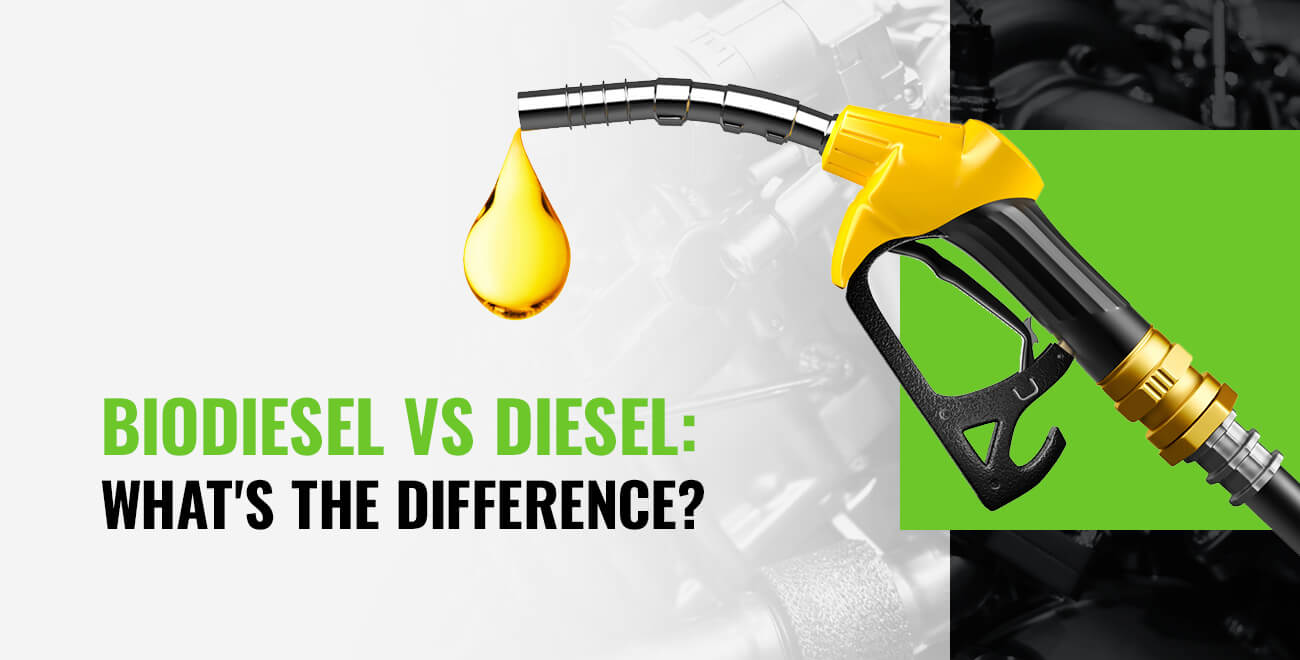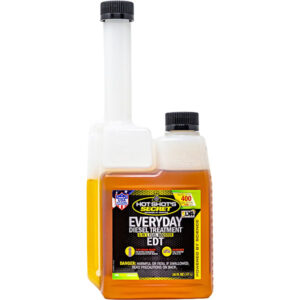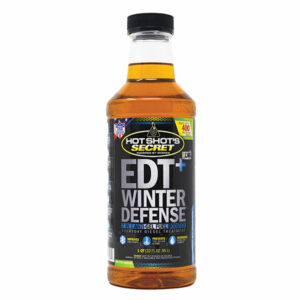
From cars to planes to power generators, heavy machinery requires fuel. For many machines, this fuel comes in the form of diesel. But with the advancement of modern technology, alternative forms of fuel are rapidly spreading throughout the market. One such alternative is biofuel, which takes various forms such as ethanol and biodiesel.
But what exactly is biofuel? What’s the difference between biodiesel and ethanol? How are these substances different from diesel? Can diesel and biodiesel be used interchangeably, or will biofuels require new machinery to use properly? Which is better for the environment? For your car? Which is a more efficient fuel source? And most importantly — which should you use?
What is Diesel?
Diesel is a distillate fuel oil compatible with compression-ignition engines. It is used in trains, boats, buses, freight trucks, delivery trucks, diesel-engine power generators and even some cars and smaller trucks. It was patented in 1892 by a German engineer named Rudolf Diesel. Until then, diesel was referred to as distillate and was seen merely as a byproduct for the distillation process used to obtain paraffin for lamps.
Diesel was a revolutionary energy source due to the fact that it didn’t require external ignition. Previous fuels, such as coal, required a pre-existing fire in order to create energy. Diesel engines, however, compress the diesel with enough pressure to make it ignite. This combustion pushes the piston of the engine and drives the machine. This allowed for smaller engines that could be placed in smaller vehicles. Within twenty years, though, the design was scaled up for larger machines, such as trains.
Diesel is refined from crude oil at a ratio of about 11-12 gallons of diesel for every 42 gallons of crude oil. The oil is heated until it boils, and the vapors are captured and distilled into various liquids, including diesel fuel. This dependence on crude oil makes diesel a non-renewable resource.
Before 2006, most diesel contained large amounts of sulfur, until the United States Environmental Protection Agency passed sulfur reduction requirements in order to cut back on air pollution and health hazards. These requirements were implemented over time, starting with diesel fuel used for roadways. Currently, all diesel fuel sold in the US for highway use, and most sold for off-highway use, is ultra-low sulfur diesel.
What is Biofuel?
Biofuels are fuel sources derived from animal and plant matter, also known as biomass. Unlike diesel fuel, biofuel is as renewable as the biomass it’s derived from. The idea for biofuels was derived, once again, by Rudolf Diesel, who considered using vegetable seed oil for one of his first diesel engines. This idea wasn’t fully explored until the 1900s world fair, where the French government commissioned a diesel engine that ran on peanut oil.
There are currently two major types of biofuel — ethanol and biodiesel — as well as upcoming types, such as hydrocarbon or “drop-in” fuels. While all are biofuels, each type has different synthesizing methods.
- Ethanol: An alcohol fuel made from plants. Most ethanol is derived from plant starches and sugars, such as those found in corn or sugarcane, but studies are underway to derive ethanol from cellulose and hemicellulose, which are the fibrous, non-edible parts of the plant. It’s usually formed through fermentation, a process where microorganisms break down plant sugars and produce ethanol as a byproduct. Ethanol is often blended with gasoline to cut down on emissions, so much so that more than 98% of US gas contains it.
- Biodiesel: A nontoxic, biodegradable fuel source made by combining alcohol, such as ethanol, with vegetable oils or animal fats. These substances can be new or used — even old restaurant grease can be converted into biodiesel. Biodiesel is often blended with standard diesel, with the most common blend being B20 — 20% biodiesel, 80% petroleum diesel.
- Hydrocarbon fuels: All petroleum fuels are formed from chains of hydrocarbons that are burned to create energy. However, hydrocarbons can also be produced from biomass through various methods. These fuels are nearly identical to petroleum fuels, which means they can be used interchangeably without the need for new engines or machinery. Since they can be “dropped in” in place of petroleum fuels, they are also referred to as drop-in fuels.
Are Diesel and Biodiesel Interchangeable?
Now that you know the differences between petroleum diesel and biofuels, you may be wondering if you can use them interchangeably, or if you’ll need a brand new engine to utilize biodiesel. Before you learn the answer, there’s one important thing to note — biofuels and biodiesel are not necessarily the same thing.
Similarly to squares and rectangles, all biodiesel is classified as biofuel, but not all biofuel counts as biodiesel. Ethanol, for example, lacks the extra fats or oils that make up biodiesel — and what’s more, standard cars can’t run on too high a concentration of ethanol in their gasoline. Drop-in fuels, meanwhile, are nearly indistinguishable from petroleum fuels, while biodiesel is not.
With that being said, standard diesel engines can use biodiesel interchangeably. While most diesel engines are not specifically designed to take biodiesel, the two fuels are similar enough that they can use it regardless. What’s more, the two substances are similar enough that they can be blended together and used as a mixed fuel. In fact, most biodiesel comes already mixed with petroleum diesel. B20 is a common blend, but B5 — 5% biodiesel, 95% petroleum diesel — is often used in fleet vehicles.
The ratio of petroleum diesel to biodiesel, however, does affect its compatibility to traditional diesel engines. High concentrations of biodiesel can negatively affect engines that aren’t built to process it, similarly to how high concentrations of ethanol aren’t accepted by most standard engines. Anything with a higher concentration of biodiesel than 20% should be used with caution.
It should also be noted that even if the engines can accept the two fuel varieties interchangeably, that’s no guarantee you’ll get the same amount of energy. For B20 blends, the energy output is about 1-2% less than the same amount of petroleum diesel. Higher percentages of biodiesel offer even less energy to the gallon. Higher percentages also increase some of the negative properties of biodiesel, such as gelling in colder temperatures.
Besides engine compatibility, another thing to take into account is additive compatibility. Car companies such as Hot Shot’s Secret sometimes offer fuel additive substances added directly to your fuel to increase lubricity, prevent gelling, increase energy output and other effects. However, not all of these substances are compatible with biodiesel, so if you use them regularly, you won’t be able to use biodiesel interchangeably with your usual diesel fuel.
Which is Better?
Even if diesel and biodiesel can be used interchangeably, the two have their own unique characteristics that you should consider before making a decision.
Biodiesel Pros
The most immediately visible benefit of biodiesel is its longevity as a fuel source. Because biodiesel is derived from biomass, it is a 100% renewable resource. It is also a more reliable energy source in the US, since it can be created from plants grown in the country instead of relying as much on foreign oil.
Biodiesel has a higher lubricity than diesel — especially ultra-low sulfur diesel, which has a reduced lubricity when compared to standard diesel. Higher lubricity reduces wear on engine parts, which contributes to longer overall engine life. Even concentrations of biodiesel as low as 1% can improve lubricity when mixed into petroleum diesel.

Finally, the combustion point of biodiesel is lower than that of petroleum diesel. While this is only useful in its pure form, this makes biodiesel safer to store, transport and clean in case of a spill.
Biodiesel Cons
While biodiesel may produce less greenhouse gas when burned, the production process largely makes up for it. The biodiesel production process uses large amounts of oil and water and can create both large-scale air pollution and small-scale water pollution. This large water consumption can also put a strain on local water sources, especially when also taking into account the amount of water used to grow the plants used to create biodiesel.
On the subject of plants, the current methods for deriving biodiesel from biomass requires a large amount of plant matter. Growing the crops to meet that demand can encourage monoculture and strain food supplies.
Biodiesel is less energy efficient than petroleum diesel, depending on the ratio of biofuel to diesel. Although the difference starts out small, it grows as the amount of biodiesel increases. Biofuel is also more expensive by the gallon than petroleum diesel is, and is more difficult to replenish, as biodiesel refill stations are scattered unevenly across the country. This means you run the risk of not being able to refuel when you need to, especially if you’re on a cross-country trip.
Since biodiesel is derived from biomass, it’s less temperature stable than petroleum diesel. If left in too-warm temperatures, it can grow mold, and if left in too-cold temperatures, it can thicken and become difficult to pour. Low-quality biodiesel can also damage engines and clog filters, while too high a ratio of biodiesel in mixed diesel fuel can have the same effect. Finally, biodiesel isn’t as compatible with engine additives as petroleum diesel.
Diesel Pros
Diesel is currently a more reliable fuel source than biodiesel. It is available at most refill stations, meaning you don’t run the risk of not being able to refill your vehicle while traveling. It’s also marginally cheaper and can be used by all diesel engines without damaging them.
Compared to biodiesel, petroleum diesel has a higher energy efficiency. Since it doesn’t rely on crops or large amounts of water for production, it also doesn’t place a strain on food or water supplies in the area it’s produced in. Unlike biodiesel, petroleum diesel won’t mold in warm temperatures and is less likely to thicken in cold ones.
Diesel Cons
The biggest downside to diesel is that, compared to biodiesel, it’s a short-lived source of fuel. Because it’s derived from crude oil, it’s a nonrenewable resource, meaning diesel supplies will eventually run out. What’s more, diesel is dependent on the importation of foreign oil, which makes it a less stable energy source overall.
Diesel creates more greenhouse gases when burned, creating a more severe environmental footprint. It is more flammable than biodiesel, making it more dangerous to store, transport and clean up if it spills. It also has less lubricity, meaning it can wear down your engine components faster.
Which Should You Use?
Now that you know the pros and cons of both diesel and biodiesel, it’s important to consider which is best for you and your vehicle. Here’s what you should consider when deciding between the two fuels:
- Availability: The most important deciding factor between diesel and biodiesel is which one you’re able to purchase reliably. As mentioned, biodiesel refill stations can be few and far between, and your chances of being able to siphon a gallon from a passing Good Samaritan are slim. Petroleum diesel, meanwhile, is much easier to get.
- Price: Even if you have ready access to biodiesel, you might find that it’s too expensive to purchase regularly.
- Efficiency: This is a similar consideration to price, in that it comes down to personal choice. Even if the energy difference between diesel and biodiesel is nearly imperceptible in low mixes, do you feel as though the loss in energy is worth the benefits of biofuel?
- Environmental impact: The environmental impact of fuel is becoming more and more prevalent in the modern day. Do you feel as though your overall environmental footprint is low enough to allow for petroleum diesel? Or would you feel more at ease knowing you were having less of an impact by using biodiesel?
- Product limitations: Finally, consider the products you use with your vehicle. There are significantly fewer fuel additives that are compatible with biodiesel — what’s more, just using biodiesel might require some extra additives, such as Hot Shot’s Secret’s Winter Anti-Gel.
Ultimately, even after taking everything into account, the decision of which fuel to use is yours.
Explore Diesel and Biodiesel-Compatible Products
Diesel and biodiesel are both versatile fuels, useful in cars, trains and even power generators. The introduction of diesel marked a revolutionary change in the fuel industry, while biodiesel and other biofuels look to improve upon it. They both have unique characteristics that can make one more fitting for your vehicle than the other, but it’s up to you to determine which you prefer.
However, whether you use diesel or biodiesel, Hot Shot’s Secret has you covered. We offer a variety of products for your vehicle, including engine additives. We also have a selection of biofuel-friendly additives, such as our Winter Anti-Gel fluid and our Diesel Winter Rescue. Come browse our online shop and enhance your driving experience today.




